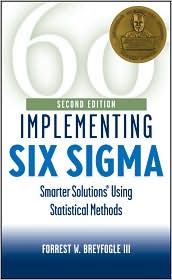The use of different belts and the colors
 According to six sigma the word belt refers to the level or the position, of a person in an organization at the time of performing a work or at the time of implementation of a project. Several personalities take part at the time of the implementation of a work, so as to meet and make sure that the project is launched with zero defects and is able to meet the customer satisfaction. Hence results in sustaining the quality and profit of the company or the organization.
According to six sigma the word belt refers to the level or the position, of a person in an organization at the time of performing a work or at the time of implementation of a project. Several personalities take part at the time of the implementation of a work, so as to meet and make sure that the project is launched with zero defects and is able to meet the customer satisfaction. Hence results in sustaining the quality and profit of the company or the organization.
Each belt is given different colors for the purpose their six sigma success identification. Each color represents each responsibility. This is because the aim of six sigma is not only the production of defect free projects and products, but also the fast implementation of the projects with out time waste. This is able when the work is divided into several parts. More over each color indicates each quality or level of skills. This identification could help the project leaders to find out the apt person for assigning the different tasks. Each color is having different task responsibilities and skills to perform. Therefore the color will also help the project leader to find out the skills and the responsibilities of the person assigned to the work.
The 3 major levels of belts and colors are
Green belt
Black belt
Master black belt
There are training and certifications for each color of belt. For example:
CSSGB- Six Sigma Green Belt
Here the six sigma green belt operators are given training to operate in the support or under the supervision of a six sigma black belt. Through this certification the person is trained to analyze and solve quality problems. This results in the quality improvement projects. The person, who had undergone the six sigma green belt certification, has at least three years of work experience in demonstrating the knowledge of six sigma tools and processes.
CSSBB- Six Sigma Black Belt
The candidate who had undergone six sigma black belt certification is a professional who is capable in the explanation of six sigma philosophies and the principles. His knowledge also includes the supporting systems and the tools. This certification also deals with the training of the candidate in developing the demonstrating of the team leadership, understanding team dynamics and assigning team member roles and responsibilities. A six sigma black belt will be well versed will all the aspects of the DMAIC model in accordance with the six sigma principles. These professionals have basic knowledge of lean enterprise concepts. They are capable in identifying non-value added elements and activities. They are also capable in the use of specific tools
Master Black Belt
The professionals who had undergone the master black belt certification are considered as a six sigma quality experts and they are responsible for the strategic implementations within an organization. The training is given for the improvement of the responsibilities of a master black belt, which includes training and mentoring of black belts and the green belts. Moreover the responsibilities or the duties of a master black belt extend to the range of helping the both belts in prioritizing, selecting and charting high impact projects.
Maintaining the integrity of the six sigma measurements, improvements and developing, revising six sigma training materials, qualifying or teaching the other six sigma facilitators about the methodologies, tools and applications in all functional areas of a company are some of the other responsibilities of a person who has completed master black belt certification.
The major works and responsibilities are done under these sections. Meanwhile there are some concepts which is related to the customer requirements and the process of thinking. These are the sections done by the yellow belt.
Yellow Belt
Six Sigma Yellow Belt certification provides with the attendees an overall insight to the use age of the six sigma techniques. The training is also given in the field of six sigma metrics and the basic improvement methodologies. It is essential for six sigma yellow belt to learn how to integrate lean and six sigma methodologies to get the high level production and transactional systems. This is to meet the customer’s expectations and the objectives of the organization from the bottom, to its best. The certification helps the trainees to receive an idea about the introduction to the process management and the basic tools of six sigma. Strong understanding of the processes, enabling each individual to provide meaningful assistance is the other characteristics of the six sigma yellow belt certification. The aim of this certification is the achievement of the organizations overall objectives.
 According to six sigma the word belt refers to the level or the position, of a person in an organization at the time of performing a work or at the time of implementation of a project. Several personalities take part at the time of the implementation of a work, so as to meet and make sure that the project is launched with zero defects and is able to meet the customer satisfaction. Hence results in sustaining the quality and profit of the company or the organization.
According to six sigma the word belt refers to the level or the position, of a person in an organization at the time of performing a work or at the time of implementation of a project. Several personalities take part at the time of the implementation of a work, so as to meet and make sure that the project is launched with zero defects and is able to meet the customer satisfaction. Hence results in sustaining the quality and profit of the company or the organization. The purpose and the origin of the process six sigma is the result of need for business improvement through customer satisfaction, reduced costs, production of high quality products with less defects and increased profits. Hence the fundamental aim of the six sigma methodology is the implementation of a systematically based measurement strategy focusing the improvement process. Within this improvement aspects the six sigma methodology includes the responsibilities of the improving the team, helping the team in identifying the process, the defects and the corresponding measurements. It is because of this wide range of flexibility in quality improvement, six sigma methodology toolkit is the best existing software process implementation.
The purpose and the origin of the process six sigma is the result of need for business improvement through customer satisfaction, reduced costs, production of high quality products with less defects and increased profits. Hence the fundamental aim of the six sigma methodology is the implementation of a systematically based measurement strategy focusing the improvement process. Within this improvement aspects the six sigma methodology includes the responsibilities of the improving the team, helping the team in identifying the process, the defects and the corresponding measurements. It is because of this wide range of flexibility in quality improvement, six sigma methodology toolkit is the best existing software process implementation. The overview about the Six Sigma, deals with the brief explanation about what Six Sigma is? The history of Six Sigma, the six sigma methodology, the use of six sigma, different six sigma belts, points of attention and the total conclusion about six sigma.
The overview about the Six Sigma, deals with the brief explanation about what Six Sigma is? The history of Six Sigma, the six sigma methodology, the use of six sigma, different six sigma belts, points of attention and the total conclusion about six sigma. Six sigma follows an orderly changes for the attainment of the best results. For this the top management must be patient at the time of decision making and there should be no place for quick fix. This helps in getting the right answer and not just any answer
Six sigma follows an orderly changes for the attainment of the best results. For this the top management must be patient at the time of decision making and there should be no place for quick fix. This helps in getting the right answer and not just any answer The curriculum of six sigma training in UK is lined with the “American society for quality” which is endorsed by the “European organization for quality”. In UK, the training is done through the direct entry of all programs except in the case of master black belt training program. In the case of master black belt training, six sigma black belt training with a reputed training provider is a prerequisite.
The curriculum of six sigma training in UK is lined with the “American society for quality” which is endorsed by the “European organization for quality”. In UK, the training is done through the direct entry of all programs except in the case of master black belt training program. In the case of master black belt training, six sigma black belt training with a reputed training provider is a prerequisite. “Six sigma champion training and certification
“Six sigma champion training and certification Regression analysis is one of the statistical tools used for assessing the relationship between two variables. It is a method that quantifies the association between the two variables for example X & Y by placing in a line or on an plane in such a way that all the points lie in a line or evenly distributed on a plane.
Regression analysis is one of the statistical tools used for assessing the relationship between two variables. It is a method that quantifies the association between the two variables for example X & Y by placing in a line or on an plane in such a way that all the points lie in a line or evenly distributed on a plane. Nonlinear Regression : It is a type of analysis where a nonlinear combination of the variables depends on one or more independent variables. Least Square regression models are developed for the models that are linear in the coefficients but when it needs to be used in an Nonlinear models, numerical methods has to be used.
Nonlinear Regression : It is a type of analysis where a nonlinear combination of the variables depends on one or more independent variables. Least Square regression models are developed for the models that are linear in the coefficients but when it needs to be used in an Nonlinear models, numerical methods has to be used. 1) Six sigma methodology
1) Six sigma methodology The importance of the implementation of six sigma methodology is very high with in an organization, as it aims at the improvement of the quality of the management and the products, so that an organization or business can be sure to meet the customer satisfaction and competitive global marketing. Since there are lot of aspects in six sigma methodology, the scope of six sigma as a career is also is very high.
The importance of the implementation of six sigma methodology is very high with in an organization, as it aims at the improvement of the quality of the management and the products, so that an organization or business can be sure to meet the customer satisfaction and competitive global marketing. Since there are lot of aspects in six sigma methodology, the scope of six sigma as a career is also is very high.